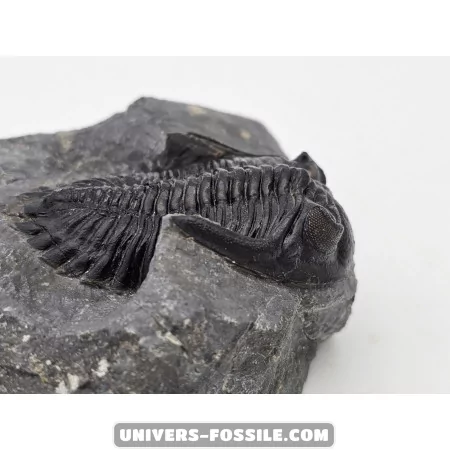Hollardops Trilobites - Fascinating Examples of Ancient Marine Life

Hollardops Trilobites
Hollardops trilobites are an extinct species of trilobites, a group of marine arthropods that thrived millions of years ago. These fascinating creatures were among the prominent inhabitants of the Paleozoic oceans, offering paleontologists valuable insights into ancient marine life.
Anatomy of Hollardops Trilobites
- Segmented Body: Like all trilobites, Hollardops had a body divided into three longitudinal parts - the cephalon (head), the thorax (body), and the pygidium (tail).
- Calcified Exoskeleton: The outer shell of trilobites was formed of chitin and calcite, providing rigid protection against predators.
- Compound Eyes: Hollardops trilobites possessed large compound eyes, consisting of many small hexagons, giving them a panoramic view of their environment.
- Antennae: Although few fossilized specimens have retained their antennae, it is likely that Hollardops had them to detect environmental stimuli.
- Segmented Legs: Trilobites used their segmented legs to move along the seafloor, sifting through the sediment in search of food.
Explore the intricate details and evolutionary marvel of Hollardops trilobites and add a piece of ancient history to your collection.
Hollardops - Rare Trilobite Fossils
Habitat:
Hollardops trilobites inhabited the seafloor millions of years ago, feeding on organic detritus and small organisms within the substrate. Their presence in geological formations spanning from Morocco to the Czech Republic sheds light on their distribution and evolutionary history.
Lifestyle:
These benthic creatures used their segmented appendages to sift through the substrate in search of food, while also serving as both predators and prey in the marine food chain. Despite their robust exoskeleton providing some defense, many Hollardops fossils exhibit evidence of interactions with other ancient marine organisms.
Extinction:
Similar to other trilobite species, the Hollardops eventually faced extinction, marking the end of an era for these fascinating creatures. The legacy of Hollardops lives on through the study of their fossils, offering a glimpse into a bygone era of marine life.
Hollardops Trilobites
Trilobites, including the Hollardops species, were early arthropods that inhabited the Earth's oceans for over 270 million years. They eventually became extinct by the end of the Permian period around 250 million years ago, during the mass extinction event that wiped out most life on Earth. The exact causes of trilobite extinction remain a topic of debate among paleontologists, but it is likely they were influenced by climatic changes, geological events, and evolutionary pressures.
Despite their extinction, Hollardops trilobites and other members of their order continue to fascinate scientists and paleontology enthusiasts worldwide. Their well-preserved fossils offer valuable insights into the biodiversity and evolution of ancient oceans, allowing us to better understand the history of life on Earth.
In conclusion, Hollardops trilobites are fascinating examples of the diversity of ancient marine life. Their fossils are precious treasures that allow us to travel back in time and explore the mysteries of prehistoric oceans.
